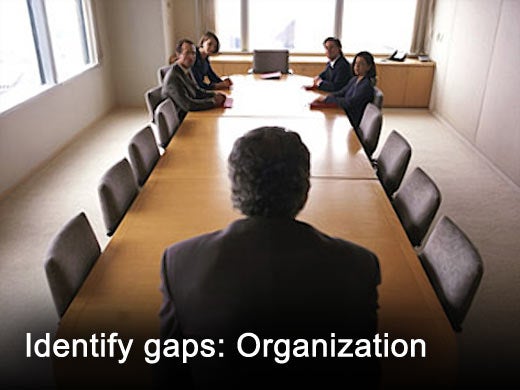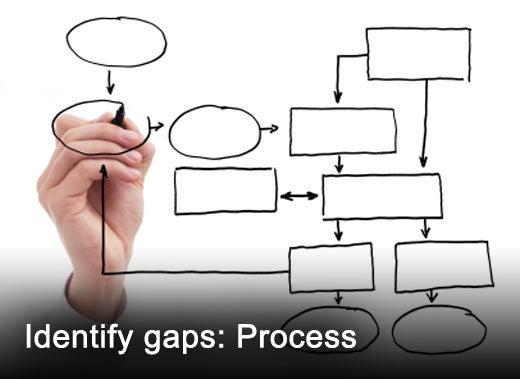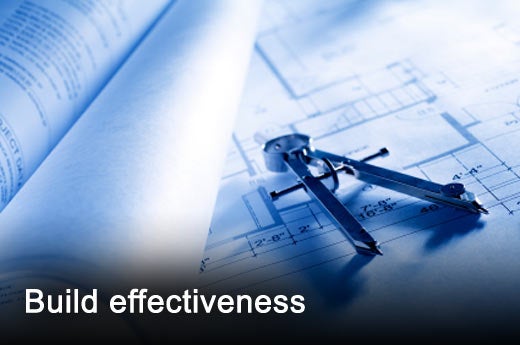There is a lot of discussion in IT circles about creating effective organizations. But what does that really mean and how do you go about creating one?
According to Charles Araujo, president and managing consultant of CastlePointe, a lot of people confuse effectiveness with the concept of being really good at doing something. You hear people say that “it was an effective presentation” when they’re trying to tell someone that the presenter did a good job executing the delivery. But saying that something or someone is effective means much more than that it was just a job well done; being effective means that it achieved its intended objective.
This is a significant distinction and one that has relevance to many IT organizations. There are many IT organizations that, after years of process improvement efforts, now execute very efficiently – but in ways that provide very little value to the business. These organizations may be very efficient, but they are not effective because their execution is not in line with what the business truly expects.
To create an effective organization, you must identify those practices or elements within your current organizational capabilities that are hindering your ability to fulfill your mission. With these gaps identified, you can develop a plan to build the necessary capabilities. While this may sound simple, it can challenge the common approach that organizations typically take when embarking on an improvement effort.
Charles Araujo offers the following steps to improve effectiveness in your organization.
Click through for eight steps to improve effectiveness in your organization.
It’s critical that you begin your journey to effectiveness by defining your mission. What is the objective that your organization (whether that’s all of IT or some specific group) must achieve to be viewed as successful by your customer? If you can’t readily answer that question, you should stop now and go figure it out. Without a clear answer, any effort to become an “effective” organization will be futile. The reason is simple – being effective simply means that you are fulfilling your mission consistently and reliably. Without a clear mission, you will never be an effective organization.
It all starts with people. Do you have enough people with the skills necessary to fulfill your mission? Do they have the training necessary to execute effectively?
The management capability represents the information and insights that enable you and your team to manage the execution effectively in support of your mission. Does your team have the necessary data to identify performance gaps? Are they able to correlate information to take corrective action?
Knowledge represents the collection and presentation of information in a way that enables effective action to take place in the delivery of services. Does your team have access to the knowledge they need to effectively fulfill their mission on a regular basis? Are data elements being transformed into relevant knowledge (based on your mission) through the application of appropriate context?
To fulfill your mission, you must review your organizational structure to make sure that your team is organized in a manner that makes it most conducive to meeting your objectives. Is your current organizational structure inhibiting your team’s ability to fulfill its mission? Is it creating unnecessary inefficiencies because it’s organized based on legacy structures?
Process is the defined steps that your team follows to execute specific tasks and functions. While this has often been a large area of focus for IT organizations, process improvement has rarely been done from the perspective of the organization’s mission. Are your operational processes efficient in delivering and supporting services that fulfill your mission? Are you focusing on improving those processes that will enable you to more effectively meet your objectives?
Finally, you must evaluate if there are any tool gaps that are making it more difficult to fulfill your mission. Are there any gaps in your current tool sets that inhibit your ability to execute effectively? Is there a lack of tool focus (with multiple tools providing the same or similar functions) which introduces inefficiencies and confusion, making it difficult to meet your objectives?
Once you’ve identified the potential organizational capability gaps, you can establish a framework to build those capabilities and drive organizational effectiveness.
This approach provides the missing link that often inhibits IT organizations from achieving effectiveness. While you may understand your mission (or some part of it), it is often challenging to rally the team around the fulfillment of it. The translation of the mission into a set of required organizational capabilities makes it much easier for the entire organization to relate with the specific areas of improvement and become engaged and impassioned about improving them.











